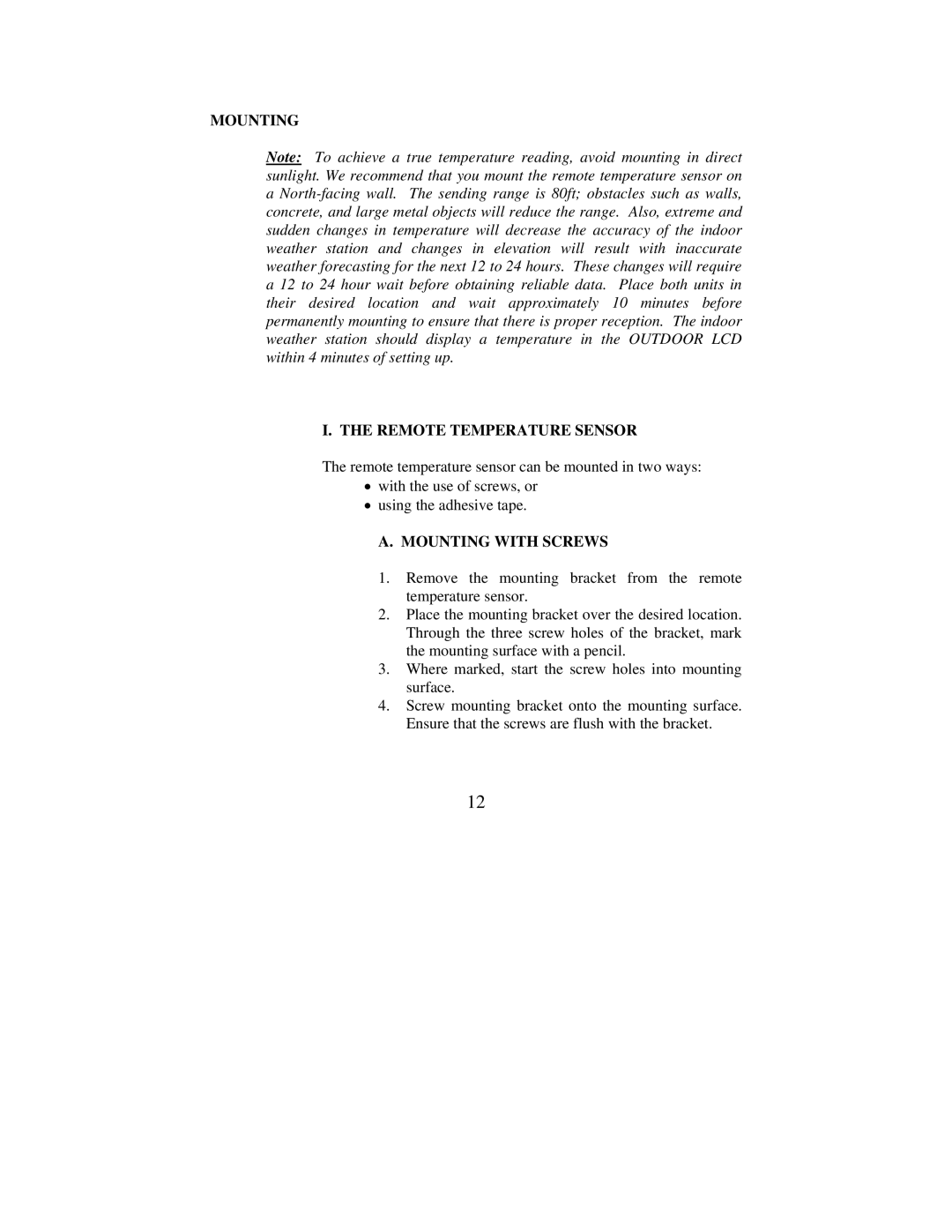WS-7049U specifications
The La Crosse Technology WS-7049U is a sophisticated weather station designed to provide users with accurate and real-time meteorological data. With its sleek design and user-friendly interface, it serves both casual users and dedicated weather enthusiasts who appreciate detailed insights into outdoor conditions.One of the standout features of the WS-7049U is its ability to measure and display various critical weather parameters. It includes a wireless outdoor sensor that tracks temperature, humidity, wind speed, and wind direction. This data is transmitted to an indoor display unit, providing instant access to current weather conditions. The sensor range can extend up to 300 feet, allowing users the flexibility to place the sensor in an optimal location away from their indoor display.
The weather station also showcases a digital display that presents information in a clear and organized manner. The main screen features a large, easy-to-read LCD panel, where users can view current readings of indoor and outdoor temperatures and humidity levels at a glance. Moreover, the WS-7049U offers historical data, allowing users to track weather trends over time.
In terms of technology, the WS-7049U utilizes 433 MHz wireless technology, ensuring reliable data transmission between the outdoor sensor and the display console. The sensor is powered by batteries, making it low-maintenance and capable of functioning well in various weather conditions.
Another prominent characteristic of this weather station is its built-in forecasting capabilities. The WS-7049U uses a combination of current atmospheric pressure readings and historical data to provide users with accurate weather forecasts for the upcoming days. This feature is particularly useful for planning outdoor activities, monitoring severe weather, or simply staying informed about changing conditions.
Furthermore, the WS-7049U enables users to monitor not just temperature and humidity but also features an alarm function for extreme weather conditions, such as high winds or freezing temperatures. This adds an additional layer of safety and preparedness for families and individuals alike.
In summary, the La Crosse Technology WS-7049U is a comprehensive weather monitoring solution that combines advanced features, user-friendly design, and reliable technology. It empowers users to make informed decisions based on real-time weather data, enhancing both safety and outdoor experiences while fostering a greater appreciation for the dynamics of weather.
